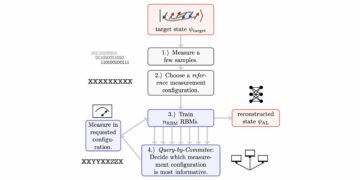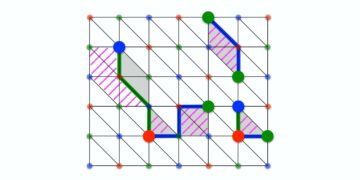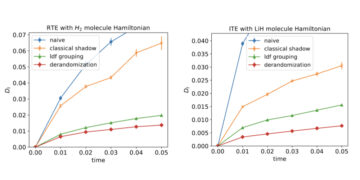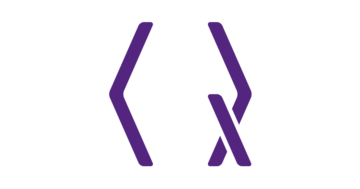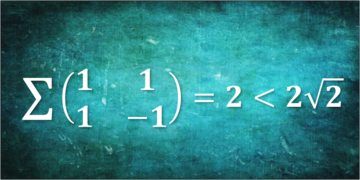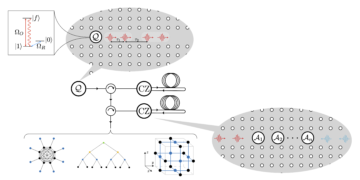1Institut für Theoretische Physik und IQST, Albert-Einstein-Allee 11, Universität Ulm, D-89081 Ulm, Germany
2SUPA, School of Physics and Astronomy, University of St Andrews, St Andrews KY16 9SS, UK
3Sorbonne Université, CNRS, Institut des NanoSciences de Paris, 4 place Jussieu, 75005 Paris, France
Find this paper interesting or want to discuss? Scite or leave a comment on SciRate.
Abstract
Nanodevices exploiting quantum effects are critically important elements of future quantum technologies (QT), but their real-world performance is strongly limited by decoherence arising from local `environmental’ interactions. Compounding this, as devices become more complex, i.e. contain multiple functional units, the `local’ environments begin to overlap, creating the possibility of environmentally mediated decoherence phenomena on new time-and-length scales. Such complex and inherently non-Markovian dynamics could present a challenge for scaling up QT, but – on the other hand – the ability of environments to transfer `signals’ and energy might also enable sophisticated spatiotemporal coordination of inter-component processes, as is suggested to happen in biological nanomachines, like enzymes and photosynthetic proteins. Exploiting numerically exact many body methods (tensor networks) we study a fully quantum model that allows us to explore how propagating environmental dynamics can instigate and direct the evolution of spatially remote, non-interacting quantum systems. We demonstrate how energy dissipated into the environment can be remotely harvested to create transient excited/reactive states, and also identify how reorganisation triggered by system excitation can qualitatively and reversibly alter the `downstream’ kinetics of a `functional’ quantum system. With access to complete system-environment wave functions, we elucidate the microscopic processes underlying these phenomena, providing new insight into how they could be exploited for energy efficient quantum devices.

Featured image: (a) Spatially distributed systems dissipate energy into their environment and/or cause local deformations that typically propagate and are lost in the bulk medium (red arrows). When systems are packed into nanoscale regions, a significant fraction of environmental excitations will encounter neighbouring systems and influence their dynamics (green arrows), even if the systems are uncoupled (yellow arrow indicates coherent coupling). These interactions are retarded, i.e. depend on the speed of signal propagation and the separation of the systems, providing new time and length scales to their now cooperative dissipative dynamics.
Examples in 1D:
(b) in photosynthetic reaction centers, pigments are held by a protein scaffold that can dissipatively mediate vibrations and structural reorganisation to coordinate exciton (eelectron-hole pair) splitting, electron transfer and hole refilling in different locations (separated by 4 − 5 nm) on timescales from the fs to the μs.
(c) Spin-entangled triplet-pairs generated by intramolecular singlet fission interact strongly through the vibrational wave packets of the molecular backbone structure, as in polydiacetylene.
(d) A pair of uncoupled quantum dots (QDs) are encapsulated in a nanowire. Exciting one of them thus excites the mechanical modes of the wire. These distortions propagate and could interact with the other QD.
Popular summary
However the more complex quantum devices will become, the closer their different components will be. In that context, the assumption of distinct local environments breaks done and we need to consider the interaction of functional units with a common environment. In that case, the energy dissipated by one part of the system could, for instance, be absorbed later by another part. This makes the description of such global environments fundamentally more complex than local ones because their inner dynamics cannot be neglect if one wants to understand the dynamics of the system.
Using tensor networks methods to represent and time-evolve the quantum state of the system and environment together, we are able to uncover processes that are happening on new time-and-length scales because of the propagation of energy/information inside of the environment.
The new phenomenology of physical processes, resulting from considering quantum systems interacting with a common environment, has important consequences for the design of nanodevices as it gives access to new control, sensing and cross-talk mechanisms.
► BibTeX data
► References
[1] J. P. Dowling and G. J. Milburn, Quantum technology: the second quantum revolution, Philosophical Transactions of the Royal Society of London. Series A: Mathematical, Physical and Engineering Sciences 361, 1655 (2003).
https://doi.org/10.1098/rsta.2003.1227
[2] I. H. Deutsch, Harnessing the Power of the Second Quantum Revolution, PRX Quantum 1, 020101 (2020).
https://doi.org/10.1103/PRXQuantum.1.020101
[3] Quantum Computation and Quantum Information: 10th Anniversary Edition (2010) iSBN: 9780511976667 Publisher: Cambridge University Press.
https://doi.org/10.1017/CBO9780511976667
[4] Pascal Degiovanni, Natacha Portier, Clément Cabart, Alexandre Feller, and Benjamin Roussel, Physique quantique, information et calcul – Des concepts aux applications, 1st ed., Savoirs Actuels (EDP Sciences, 2020).
[5] Masahito Hayashi, Quantum Information, 1st ed. (Springer Berlin Heidelberg, 2006).
https://doi.org/10.1007/3-540-30266-2
[6] G. Grynberg, A. Aspect, and C. Fabre, Introduction to Quantum Optics: From the Semi-classical Approach to Quantized Light (Cambridge University Press, Cambridge, 2010).
https://doi.org/10.1017/CBO9780511778261
[7] P. Kok and B. W. Lovett, Introduction to Optical Quantum Information Processing (Cambridge University Press, Cambridge, 2010).
https://doi.org/10.1017/CBO9781139193658
[8] M. Aspelmeyer, T. J. Kippenberg, and F. Marquardt, eds., Cavity Optomechanics: Nano- and Micromechanical Resonators Interacting with Light (Springer Berlin Heidelberg, Berlin, Heidelberg, 2014).
https://doi.org/10.1007/978-3-642-55312-7
[9] H.-P. Breuer and F. Petruccione, The Theory of Open Quantum Systems (Oxford University Press, 2007).
https://www.oxfordscholarship.com/view/10.1093/acprof:oso/9780199213900.001.0001/acprof-9780199213900
[10] U. Weiss, Quantum Dissipative Systems, 4th ed. (World Scientific, 2012).
https://doi.org/10.1142/8334
[11] H. Esmaielpour, B. K. Durant, K. R. Dorman, V. R. Whiteside, J. Garg, T. D. Mishima, M. B. Santos, I. R. Sellers, J.-F. Guillemoles, and D. Suchet, Hot carrier relaxation and inhibited thermalization in superlattice heterostructures: The potential for phonon management, Applied Physics Letters 118, 213902 (2021).
https://doi.org/10.1063/5.0052600
[12] Lorenza Viola, Emanuel Knill, and Seth Lloyd. Dynamical Decoupling of Open Quantum Systems. Physical Review Letters, 82(12):2417–2421 (1999).
https://doi.org/10.1103/PhysRevLett.82.2417
[13] M. Mohseni, P. Rebentrost, S. Lloyd, and A. Aspuru-Guzik, Environment-assisted quantum walks in photosynthetic energy transfer, The Journal of Chemical Physics 129, 174106 (2008).
https://doi.org/10.1063/1.3002335
[14] M. B. Plenio and S. F. Huelga, Dephasing-assisted transport: quantum networks and biomolecules, New J. Phys. 10, 113019 (2008).
https://doi.org/10.1088/1367-2630/10/11/113019
[15] F. Caruso, A. W. Chin, A. Datta, S. F. Huelga, and M. B. Plenio, Highly efficient energy excitation transfer in light-harvesting complexes: The fundamental role of noise-assisted transport, J. Chem. Phys. 131, 105106 (2009).
https://doi.org/10.1063/1.3223548
[16] M. Wertnik, A. Chin, F. Nori, and N. Lambert, Optimizing co-operative multi-environment dynamics in a dark-state-enhanced photosynthetic heat engine, The Journal of chemical physics 149, 084112 (2018).
https://doi.org/10.1063/1.5040898
[17] S. Ghosh, T. Chanda, S. Mal, A. Sen, et al., Fast charging of a quantum battery assisted by noise, Physical Review A 104, 032207 (2021).
https://doi.org/10.1103/PhysRevA.104.032207
[18] J. Q. Quach, K. E. McGhee, L. Ganzer, D. M. Rouse, B. W. Lovett, E. M. Gauger, J. Keeling, G. Cerullo, D. G. Lidzey, and T. Virgili, Superabsorption in an organic microcavity: Toward a quantum battery, Science Advances 8, eabk3160 (2022), publisher: American Association for the Advancement of Science.
https://doi.org/10.1126/sciadv.abk3160
[19] A. Potočnik, A. Bargerbos, F. A. Schröder, S. A. Khan, M. C. Collodo, S. Gasparinetti, Y. Salathé, C. Creatore, C. Eichler, H. E. Türeci, et al., Studying light-harvesting models with superconducting circuits, Nature communications 9, 1 (2018).
https://doi.org/10.1038/s41467-018-03312-x
[20] C. Maier, T. Brydges, P. Jurcevic, N. Trautmann, C. Hempel, B. P. Lanyon, P. Hauke, R. Blatt, and C. F. Roos, Environment-assisted quantum transport in a 10-qubit network, Physical Review Letters 122, 050501 (2019).
https://doi.org/10.1103/PhysRevLett.122.050501
[21] J. Hansom, C. H. Schulte, C. Le Gall, C. Matthiesen, E. Clarke, M. Hugues, J. M. Taylor, and M. Atatüre, Environment-assisted quantum control of a solid-state spin via coherent dark states, Nature Physics 10, 725 (2014).
https://doi.org/10.1038/nphys3077
[22] R. Kosloff, Quantum thermodynamics and open-systems modeling, The Journal of chemical physics 150, 204105 (2019).
https://doi.org/10.1063/1.5096173
[23] S. Deffner and S. Campbell, Quantum Thermodynamics (Morgan & Claypool, 2019).
https://doi.org/10.1088/2053-2571/ab21c6
[24] F. Verstraete, M. M. Wolf, and J. Ignacio Cirac, Quantum computation and quantum-state engineering driven by dissipation, Nature Phys 5, 633 (2009).
https://doi.org/10.1038/nphys1342
[25] A. Bermudez, T. Schaetz, and M. B. Plenio, Dissipation-Assisted Quantum Information Processing with Trapped Ions, Phys. Rev. Lett. 110, 110502 (2013).
https://doi.org/10.1103/PhysRevLett.110.110502
[26] S. Gröblacher, A. Trubarov, N. Prigge, G. D. Cole, M. Aspelmeyer, and J. Eisert, Observation of non-Markovian micromechanical Brownian motion, Nat Commun 6, 7606 (2015).
https://doi.org/10.1038/ncomms8606
[27] C.-F. Li, G.-C. Guo, and J. Piilo, Non-markovian quantum dynamics: What is it good for?, EPL (Europhysics Letters) 128, 30001 (2020).
https://doi.org/10.1209/0295-5075/128/30001
[28] B.-H. Liu, L. Li, Y.-F. Huang, C.-F. Li, G.-C. Guo, E.-M. Laine, H.-P. Breuer, and J. Piilo, Experimental control of the transition from markovian to non-markovian dynamics of open quantum systems, Nature Physics 7, 931 (2011).
https://doi.org/10.1038/nphys2085
[29] D. Khurana, B. K. Agarwalla, and T. Mahesh, Experimental emulation of quantum non-markovian dynamics and coherence protection in the presence of information backflow, Physical Review A 99, 022107 (2019).
https://doi.org/10.1103/PhysRevA.99.022107
[30] K. H. Madsen, S. Ates, T. Lund-Hansen, A. Löffler, S. Reitzenstein, A. Forchel, and P. Lodahl, Observation of non-markovian dynamics of a single quantum dot in a micropillar cavity, Physical review letters 106, 233601 (2011).
https://doi.org/10.1103/PhysRevLett.106.233601
[31] M. Sarovar, T. Proctor, K. Rudinger, K. Young, E. Nielsen, and R. Blume-Kohout, Detecting crosstalk errors in quantum information processors, Quantum 4, 321 (2020), arXiv:1908.09855 [quant-ph].
https://doi.org/10.22331/q-2020-09-11-321
arXiv:1908.09855
[32] F. Müh and A. Zouni, The nonheme iron in photosystem II, Photosynth Res 116, 295 (2013).
https://doi.org/10.1007/s11120-013-9926-y
[33] R. Pandya, Q. Gu, A. Cheminal, R. Y. Chen, E. P. Booker, R. Soucek, M. Schott, L. Legrand, F. Mathevet, N. C. Greenham, et al., Optical projection and spatial separation of spin-entangled triplet pairs from the s1 (21 ag–) state of pi-conjugated systems, Chem 6, 2826 (2020).
https://doi.org/10.1016/j.chempr.2020.09.011
[34] Á. Rivas, S. F. Huelga, and M. B. Plenio, Quantum non-markovianity: characterization, quantification and detection, Reports on Progress in Physics 77, 094001 (2014).
https://doi.org/10.1088/0034-4885/77/9/094001
[35] I. De Vega and D. Alonso, Dynamics of non-markovian open quantum systems, Reviews of Modern Physics 89, 015001 (2017).
https://doi.org/10.1103/RevModPhys.89.015001
[36] S. Oviedo-Casado, J. Prior, A. Chin, R. Rosenbach, S. Huelga, and M. Plenio, Phase-dependent exciton transport and energy harvesting from thermal environments, Physical Review A 93, 020102 (2016).
https://doi.org/10.1103/PhysRevA.93.020102
[37] A. Strathearn, P. Kirton, D. Kilda, J. Keeling, and B. W. Lovett, Efficient non-Markovian quantum dynamics using time-evolving matrix product operators, Nat Commun 9, 3322 (2018).
https://doi.org/10.1038/s41467-018-05617-3
[38] M. R. Jørgensen and F. A. Pollock, A discrete memory-kernel for multi-time correlations in non-Markovian quantum processes, Phys. Rev. A 102 (2020).
https://doi.org/10.1103/PhysRevA.102.052206
[39] F. A. Schröder, D. H. Turban, A. J. Musser, N. D. Hine, and A. W. Chin, Tensor network simulation of multi-environmental open quantum dynamics via machine learning and entanglement renormalisation, Nature communications 10, 1 (2019).
https://doi.org/10.1038/s41467-019-09039-7
[40] N. Lambert, S. Ahmed, M. Cirio, and F. Nori, Modelling the ultra-strongly coupled spin-boson model with unphysical modes, Nat Commun 10, 3721 (2019).
https://doi.org/10.1038/s41467-019-11656-1
[41] A. D. Somoza, O. Marty, J. Lim, S. F. Huelga, and M. B. Plenio, Dissipation-Assisted Matrix Product Factorization, Phys. Rev. Lett. 123, 100502 (2019).
https://doi.org/10.1103/PhysRevLett.123.100502
[42] Y. Tanimura, Numerically “exact” approach to open quantum dynamics: The hierarchical equations of motion (HEOM), J. Chem. Phys. 153, 020901 (2020), publisher: American Institute of Physics.
https://doi.org/10.1063/5.0011599
[43] G. E. Fux, E. P. Butler, P. R. Eastham, B. W. Lovett, and J. Keeling, Efficient exploration of Hamiltonian parameter space for optimal control of non-Markovian open quantum systems, Phys. Rev. Lett. 126, 200401 (2021).
https://doi.org/10.1103/PhysRevLett.126.200401
[44] E. Ye and G. K.-L. Chan, Constructing tensor network influence functionals for general quantum dynamics, J. Chem. Phys. 155, 044104 (2021).
https://doi.org/10.1063/5.0047260
[45] M. Cygorek, M. Cosacchi, A. Vagov, V. M. Axt, B. W. Lovett, J. Keeling, and E. M. Gauger, Simulation of open quantum systems by automated compression of arbitrary environments, Nat. Phys. , 1 (2022), publisher: Nature Publishing Group.
https://doi.org/10.1038/s41567-022-01544-9
[46] J. Del Pino, F. A. Schröder, A. W. Chin, J. Feist, and F. J. Garcia-Vidal, Tensor network simulation of polaron-polaritons in organic microcavities, Physical Review B 98, 165416 (2018).
https://doi.org/10.1103/PhysRevB.98.165416
[47] Marek M. Rams and Michael Zwolak. Breaking the Entanglement Barrier: Tensor Network Simulation of Quantum Transport. Physical Review Letters, 124(13):137701 (2020) Publisher: American Physical Society.
https://doi.org/10.1103/PhysRevLett.124.137701
[48] Inés de Vega and Mari-Carmen Bañuls. Thermofield-based chain-mapping approach for open quantum systems. Physical Review A, 92(5):052116 (2015).
https://doi.org/10.1103/PhysRevA.92.052116
[49] Gabriel T. Landi, Dario Poletti, and Gernot Schaller. Nonequilibrium boundary-driven quantum systems: Models, methods, and properties. Reviews of Modern Physics, 94(4):045006 (2022).
https://doi.org/10.1103/RevModPhys.94.045006
[50] Felix A. Pollock, César Rodríguez-Rosario, Thomas Frauenheim, Mauro Paternostro, and Kavan Modi. Non-Markovian quantum processes: Complete framework and efficient characterization. Physical Review A, 97(1):012127 (2018).
https://doi.org/10.1103/PhysRevA.97.012127
[51] Chu Guo, Kavan Modi, and Dario Poletti. Tensor-network-based machine learning of non-Markovian quantum processes. Physical Review A, 102(6):062414 (2020).
https://doi.org/10.1103/PhysRevA.102.062414
[52] G.A.L. White, F.A. Pollock, L.C.L. Hollenberg, K. Modi, and C.D. Hill. Non-Markovian Quantum Process Tomography. PRX Quantum, 3(2):020344 (2022).
https://doi.org/10.1103/PRXQuantum.3.020344
[53] Li Li, Michael J. W. Hall, and Howard M. Wiseman. Concepts of quantum non-Markovianity: A hierarchy. Physics Reports, 759:1–51 (2018).
https://doi.org/10.1016/j.physrep.2018.07.001
[54] J. L. Yuly, P. Zhang, and D. N. Beratan, Energy transduction by reversible electron bifurcation, Current Opinion in Electrochemistry 29, 100767 (2021).
https://doi.org/10.1016/j.coelec.2021.100767
[55] M. L. Chaillet, F. Lengauer, J. Adolphs, F. Müh, A. S. Fokas, D. J. Cole, A. W. Chin, and T. Renger, Static disorder in excitation energies of the Fenna–Matthews–Olson protein: Structure-based theory meets experiment, J. Phys. Chem. Lett. 11, 10306 (2020).
https://doi.org/10.1021/acs.jpclett.0c03123
[56] V. Fourmond, E. S. Wiedner, W. J. Shaw, and C. Léger, Understanding and design of bidirectional and reversible catalysts of multielectron, multistep reactions, Journal of the American Chemical Society 141, 11269 (2019).
https://doi.org/10.1021/jacs.9b04854
[57] M. Djokić and H. S. Soo, Artificial photosynthesis by light absorption, charge separation, and multielectron catalysis, Chemical Communications 54, 6554 (2018).
https://doi.org/10.1039/C8CC02156B
[58] Adriana Marais, Betony Adams, Andrew K. Ringsmuth, Marco Ferretti, J. Michael Gruber, Ruud Hendrikx, Maria Schuld, Samuel L. Smith, Ilya Sinayskiy, Tjaart P. J. Krüger, Francesco Petruccione, and Rienk van Grondelle. The future of quantum biology. Journal of The Royal Society Interface, 15(148):20180640 (2018) Publisher: Royal Society.
https://doi.org/10.1098/rsif.2018.0640
[59] Jianshu Cao, Richard J. Cogdell, David F. Coker, Hong-Guang Duan, Jürgen Hauer, Ulrich Kleinekathöfer, Thomas L. C. Jansen, Tomáš Mančal, R. J. Dwayne Miller, Jennifer P. Ogilvie, Valentyn I. Prokhorenko, Thomas Renger, Howe-Siang Tan, Roel Tempelaar, Michael Thorwart, Erling Thyrhaug, Sebastian Westenhoff, and Donatas Zigmantas. Quantum biology revisited. Science Advances, 6(14):eaaz4888 (2020) Publisher: American Association for the Advancement of Science.
https://doi.org/10.1126/sciadv.aaz4888
[60] Youngchan Kim, Federico Bertagna, Edeline M. D’Souza, Derren J. Heyes, Linus O. Johannissen, Eveliny T. Nery, Antonio Pantelias, Alejandro Sanchez-Pedreño Jimenez, Louie Slocombe, Michael G. Spencer, Jim Al-Khalili, Gregory S. Engel, Sam Hay, Suzanne M. Hingley-Wilson, Kamalan Jeevaratnam, Alex R. Jones, Daniel R. Kattnig, Rebecca Lewis, Marco Sacchi, Nigel S. Scrutton, S. Ravi P. Silva, and Johnjoe McFadden. Quantum Biology: An Update and Perspective. Quantum Reports, 3(1):80–126 (2021) Number: 1 Publisher: Multidisciplinary Digital Publishing Institute.
https://doi.org/10.3390/quantum3010006
[61] R. Wang, R. S. Deacon, J. Sun, J. Yao, C. M. Lieber, and K. Ishibashi, Gate tunable hole charge qubit formed in a ge/si nanowire double quantum dot coupled to microwave photons, Nano Letters 19, 1052 (2019).
https://doi.org/10.1021/acs.nanolett.8b04343
[62] G. A. Worth and L. S. Cederbaum, Beyond born-oppenheimer: molecular dynamics through a conical intersection, Annu. Rev. Phys. Chem. 55, 127 (2004).
https://doi.org/10.1146/annurev.physchem.55.091602.094335
[63] D. M. Leitner, Energy flow in proteins, Annu. Rev. Phys. Chem. 59, 233 (2008).
https://doi.org/10.1146/annurev.physchem.59.032607.093606
[64] O. Arcizet, V. Jacques, A. Siria, P. Poncharal, P. Vincent, and S. Seidelin, A single nitrogen-vacancy defect coupled to a nanomechanical oscillator, Nature Phys 7, 879 (2011).
https://doi.org/10.1038/nphys2070
[65] I. Yeo, P.-L. de Assis, A. Gloppe, E. Dupont-Ferrier, P. Verlot, N. S. Malik, E. Dupuy, J. Claudon, J.-M. Gérard, A. Auffèves, G. Nogues, S. Seidelin, J.-P. Poizat, O. Arcizet, and M. Richard, Strain-mediated coupling in a quantum dot–mechanical oscillator hybrid system, Nature Nanotech 9, 106 (2014).
https://doi.org/10.1038/nnano.2013.274
[66] P. Treutlein, C. Genes, K. Hammerer, M. Poggio, and P. Rabl, Hybrid Mechanical Systems, in Cavity Optomechanics: Nano- and Micromechanical Resonators Interacting with Light, Quantum Science and Technology, edited by M. Aspelmeyer, T. J. Kippenberg, and F. Marquardt (Springer, Berlin, Heidelberg, 2014) pp. 327–351.
https://doi.org/10.1007/978-3-642-55312-7_14
[67] A. Köhler and B. Heinz, Electronic Processes in Organic Semiconductors: An Introduction (Wiley, 2015).
[68] A. W. Chin, A. Rivas, S. F. Huelga, and M. B. Plenio, Exact mapping between system-reservoir quantum models and semi-infinite discrete chains using orthogonal polynomials, J. Math. Phys. (Melville, NY, U. S.) 51, 092109 (2010).
https://doi.org/10.1063/1.3490188
[69] D. Tamascelli, A. Smirne, J. Lim, S. F. Huelga, and M. B. Plenio, Efficient Simulation of Finite-Temperature Open Quantum Systems, Phys. Rev. Lett. 123, 090402 (2019).
https://doi.org/10.1103/PhysRevLett.123.090402
[70] T. Lacroix, A. Dunnett, D. Gribben, B. W. Lovett, and A. Chin, Unveiling non-Markovian spacetime signaling in open quantum systems with long-range tensor network dynamics, Phys. Rev. A 104, 052204 (2021).
https://doi.org/10.1103/PhysRevA.104.052204
[71] Jutho Haegeman, J. Ignacio Cirac, Tobias J. Osborne, Iztok Pižorn, Henri Verschelde, and Frank Verstraete. Time-Dependent Variational Principle for Quantum Lattices. Phys. Rev. Lett., 107(7):070601 (2011).
https://doi.org/10.1103/PhysRevLett.107.070601
[72] Jutho Haegeman, Christian Lubich, Ivan Oseledets, Bart Vandereycken, and Frank Verstraete. Unifying time evolution and optimization with matrix product states. Phys. Rev. B, 94(16):165116 (2016).
https://doi.org/10.1103/PhysRevB.94.165116
[73] Sebastian Paeckel, Thomas Köhler, Andreas Swoboda, Salvatore R. Manmana, Ulrich Schollwöck, and Claudius Hubig. Time-evolution methods for matrix-product states. Annals of Physics, 411:167998 (2019).
https://doi.org/10.1016/j.aop.2019.167998
[74] A. Dunnett, MPSDynamics (2021).
https://doi.org/10.5281/zenodo.5106435
[75] G. Chiribella, G. M. D’Ariano, P. Perinotti, and B. Valiron, Quantum computations without definite causal structure, Phys. Rev. A 88, 022318 (2013).
https://doi.org/10.1103/PhysRevA.88.022318
[76] O. Oreshkov, F. Costa, and C. Brukner, Quantum correlations with no causal order, Nat Commun 3, 1092 (2012), number: 1 Publisher: Nature Publishing Group.
https://doi.org/10.1038/ncomms2076
[77] T. Renger, A. Klinger, F. Steinecker, M. Schmidt am Busch, J. Numata, and F. Müh, Normal mode analysis of the spectral density of the Fenna–Matthews–Olson light-harvesting protein: how the protein dissipates the excess energy of excitons, J. Phys. Chem. B 116, 14565 (2012).
https://doi.org/10.1063/5.0027994
[78] A. J. Dunnett and A. W. Chin, Simulating Quantum Vibronic Dynamics at Finite Temperatures With Many Body Wave Functions at 0 K, Front. Chem. 8, 10.3389/fchem.2020.600731 (2021).
https://doi.org/10.3389/fchem.2020.600731
[79] S. E. Morgan, D. J. Cole, and A. W. Chin, Nonlinear network model analysis of vibrational energy transfer and localisation in the Fenna-Matthews-Olson complex, Sci. Rep. 6, 1 (2016).
https://doi.org/10.1038/srep36703
[80] D. M. Leitner, Vibrational energy transfer in helices, Physical Review Letters 87, 188102 (2001).
https://doi.org/10.1103/PhysRevLett.87.188102
[81] J.-P. Changeux, 50th anniversary of the word “allosteric”, Protein Science 20, 1119 (2011),.
https://doi.org/10.1002/pro.658
[82] V. J. Hilser, J. O. Wrabl, and H. N. Motlagh, Structural and Energetic Basis of Allostery, Annu. Rev. Biophys. 41, 585 (2012).
https://doi.org/10.1146/annurev-biophys-050511-102319
[83] J. Liu and R. Nussinov, Allostery: An Overview of Its History, Concepts, Methods, and Applications, PLoS Comput Biol 12, 10.1371/journal.pcbi.1004966 (2016).
https://doi.org/10.1371/journal.pcbi.1004966
Cited by
Could not fetch Crossref cited-by data during last attempt 2024-04-03 15:38:38: Could not fetch cited-by data for 10.22331/q-2024-04-03-1305 from Crossref. This is normal if the DOI was registered recently. On SAO/NASA ADS no data on citing works was found (last attempt 2024-04-03 15:38:38).
This Paper is published in Quantum under the Creative Commons Attribution 4.0 International (CC BY 4.0) license. Copyright remains with the original copyright holders such as the authors or their institutions.
- SEO Powered Content & PR Distribution. Get Amplified Today.
- PlatoData.Network Vertical Generative Ai. Empower Yourself. Access Here.
- PlatoAiStream. Web3 Intelligence. Knowledge Amplified. Access Here.
- PlatoESG. Carbon, CleanTech, Energy, Environment, Solar, Waste Management. Access Here.
- PlatoHealth. Biotech and Clinical Trials Intelligence. Access Here.
- Source: https://quantum-journal.org/papers/q-2024-04-03-1305/
- :has
- :is
- :not
- ][p
- $UP
- 001
- 07
- 09
- 1
- 10
- 102
- 107
- 10th
- 11
- 110
- 116
- 118
- 12
- 127
- 13
- 14
- 15%
- 150
- 16
- 17
- 19
- 1999
- 1st
- 2%
- 20
- 2000
- 2001
- 2006
- 2007
- 2008
- 2009
- 2010
- 2011
- 2012
- 2013
- 2014
- 2015
- 2016
- 2017
- 2018
- 2019
- 2020
- 2021
- 2022
- 21
- 22
- 23
- 24
- 25
- 26
- 27
- 28
- 29
- 30
- 31
- 32
- 321
- 33
- 34
- 35%
- 36
- 361
- 39
- 4
- 40
- 41
- 411
- 42
- 45
- 46
- 48
- 49
- 4th
- 5
- 50
- 51
- 52
- 54
- 55
- 58
- 6
- 60
- 62
- 65
- 66
- 67
- 7
- 70
- 72
- 725
- 73
- 74
- 75
- 77
- 8
- 80
- 87
- 89
- 9
- 97
- 98
- a
- ability
- Able
- ABSTRACT
- access
- advancement
- advances
- affiliations
- ahmed
- AL
- alejandro
- alex
- allows
- also
- alter
- am
- American
- an
- analysis
- and
- Andrew
- andrews
- Anniversary
- Another
- applications
- applied
- approach
- apr
- arbitrary
- ARE
- arising
- artificial
- AS
- aspect
- assisted
- Association
- assumption
- astronomy
- At
- attempt
- author
- authors
- Automated
- b
- Backbone
- barrier
- bart
- basis
- battery
- BE
- because
- become
- begin
- Benjamin
- berlin
- between
- Beyond
- bidirectional
- biology
- body
- Break
- Breaking
- breaks
- bulk
- busch
- but
- by
- cambridge
- campbell
- CAN
- cannot
- cao
- case
- catalysts
- Cause
- Centers
- chains
- challenge
- chan
- charge
- charging
- chemical
- chen
- chin
- christian
- circuits
- citing
- closer
- COHERENT
- comment
- Common
- Commons
- Communications
- complete
- complex
- components
- computation
- computations
- concepts
- Consequences
- Consider
- considering
- constructing
- contain
- context
- control
- cooperative
- coordinate
- coordination
- copyright
- correlations
- costa
- could
- coupled
- create
- Creating
- Current
- Daniel
- Dark
- data
- David
- de
- defect
- del
- demonstrate
- Den
- density
- depend
- described
- description
- Design
- detecting
- Detection
- Devices
- different
- digital
- direct
- discrete
- discuss
- disorder
- distinct
- distributed
- distributed systems
- do
- done
- DOT
- double
- driven
- during
- dynamics
- e
- E&T
- ed
- edited
- edition
- effects
- efficient
- Electronic
- elements
- enable
- encapsulated
- encounter
- energetic
- energy
- Engine
- Engineering
- entanglement
- Environment
- environmental
- environmentally
- environments
- equations
- Errors
- Ether (ETH)
- Even
- evolution
- exact
- excess
- excites
- exciting
- experiment
- experimental
- exploited
- exploiting
- exploration
- explore
- external
- FAST
- Federico
- field
- finite
- flow
- For
- formed
- found
- fraction
- Framework
- frank
- from
- front
- FS
- fully
- functional
- functions
- fundamental
- fundamentally
- future
- garg
- gate
- General
- generated
- gives
- Global
- good
- Green
- Group
- Hall
- hand
- happen
- Happening
- Harnessing
- harvard
- Harvesting
- Held
- hierarchy
- highly
- history
- holders
- Hole
- HOT
- How
- howard
- HTTPS
- huang
- Hybrid
- i
- identify
- if
- ii
- image
- important
- in
- indicates
- influence
- information
- inherently
- inner
- inside
- insight
- instance
- Institute
- institutions
- interact
- interacting
- interaction
- interactions
- interesting
- Interface
- International
- intersection
- into
- Introduction
- IT
- ITS
- ivan
- JavaScript
- Jennifer
- Jim
- jones
- journal
- Kim
- Last
- later
- learning
- Leave
- Length
- Lewis
- li
- License
- light
- like
- limitation
- Limited
- linus
- local
- locations
- London
- lost
- machine
- machine learning
- Maier
- Main
- MAKES
- management
- many
- mapping
- Marco
- maria
- Marty
- math
- mathematical
- Matrix
- mauro
- max-width
- mechanical
- mechanisms
- medium
- Meets
- methods
- Michael
- microscopic
- might
- Miller
- Mode
- model
- modeling
- modelling
- models
- Modern
- modes
- molecular
- Month
- more
- Morgan
- motion
- multidisciplinary
- multiple
- nano
- Nature
- Need
- neglect
- network
- networks
- New
- nigel
- no
- Noise
- nonlinear
- normal
- now
- number
- NY
- observation
- of
- on
- ONE
- ones
- open
- operators
- Opinion
- optical
- optics
- optimal
- optimization
- optimizing
- or
- order
- organic
- original
- Other
- overlap
- overview
- Oxford
- oxford university
- packed
- packets
- pages
- pair
- pairs
- Paper
- parameter
- paris
- part
- performance
- perspective
- philosophical
- Photons
- Photosynthesis
- physical
- Physics
- Place
- plato
- Plato Data Intelligence
- PlatoData
- polynomials
- possibility
- potential
- power
- presence
- present
- press
- principle
- Prior
- process
- processes
- processing
- processors
- Product
- Progress
- Projection
- propagating
- propagation
- properties
- protection
- Protein
- Proteins
- providing
- published
- publisher
- Publishing
- QT
- quantification
- Quantum
- Quantum dot
- Quantum dots
- quantum information
- quantum networks
- Quantum optics
- quantum revolution
- quantum systems
- quantum technology
- Qubit
- R
- reaction
- reactions
- real world
- recently
- Red
- references
- regions
- registered
- relaxation
- remains
- remote
- remotely
- reorganisation
- Reports
- represent
- responsible
- resulting
- reversible
- review
- Reviews
- Revolution
- Richard
- Role
- royal
- s
- Sam
- santos
- scales
- scaling
- School
- SCI
- Science
- Science and Technology
- SCIENCES
- scientific
- Second
- Sellers
- Semiconductors
- Series
- Series A
- shaw
- Signal
- significant
- silva
- simulation
- single
- smith
- Society
- sophisticated
- Space
- Spatial
- Spectral
- speed
- Spin
- st
- State
- States
- static
- strongly
- structural
- structure
- Study
- Studying
- such
- Sun
- system
- Systems
- T
- taylor
- Technologies
- Technology
- than
- that
- The
- The Future
- their
- Them
- theory
- thermal
- These
- they
- this
- thomas
- Through
- Thus
- time
- Title
- to
- together
- tomography
- toward
- Transactions
- transfer
- transition
- transport
- trapped
- triggered
- typically
- uncontrollable
- uncover
- under
- underlying
- understand
- understanding
- units
- university
- unveiling
- Update
- URL
- us
- using
- usually
- van
- via
- vincent
- Viola
- volume
- W
- walks
- wang
- want
- wants
- was
- Wave
- we
- weiss
- What
- What is
- when
- white
- will
- Wire
- with
- without
- Wolf
- Word
- working
- works
- world
- worth
- ye
- year
- yellow
- young
- zephyrnet
- zhang

